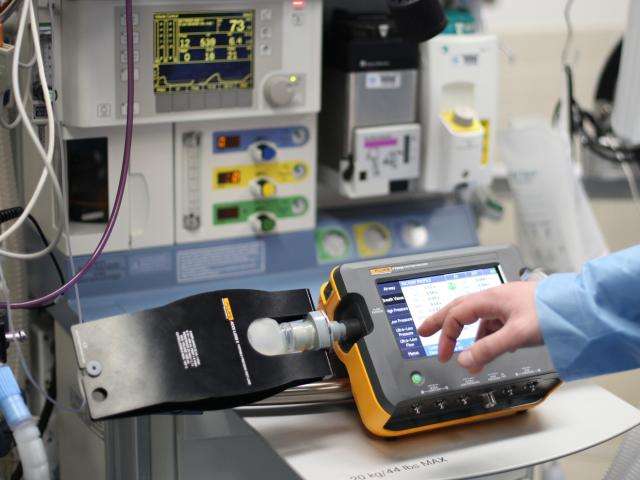Defibrillators are life-saving devices crucial for resuscitating individuals experiencing cardiac arrest. However, their effectiveness heavily depends on regular and accurate calibration. Unfortunately, mistakes in the calibration process can render these devices ineffective or even harmful. Here, we’ll explore common mistakes in defibrillator calibration and offer tips on how to avoid them.

Neglecting Regular Calibration
Mistake:
One of the most common mistakes is failing to adhere to the recommended calibration schedule. Manufacturers provide guidelines on how often defibrillators should be calibrated, typically every six to twelve months. Ignoring these guidelines can lead to inaccurate energy delivery during a critical moment.
How to Avoid:
Establish a maintenance schedule that includes regular calibration. Use reminders or digital maintenance logs to ensure that calibration dates are not missed. Assign a specific person or team to be responsible for the maintenance of defibrillators.
Improper Calibration Procedures
Mistake:
Improper calibration procedures can occur due to a lack of training or understanding of the device’s specific requirements. This might involve using incorrect tools, not following the manufacturer’s protocol, or failing to complete all necessary steps.
How to Avoid:
Ensure that all personnel responsible for calibrating defibrillators are adequately trained and certified. Regularly review and update training programs to incorporate the latest guidelines and best practices. Always follow the manufacturer’s instructions meticulously.
Using Outdated or Non-Standard Equipment
Mistake:
Using outdated or non-standard equipment for calibration can lead to inaccurate readings and adjustments. Defibrillator technology evolves, and using older calibration tools may not meet the accuracy requirements of newer devices.
How to Avoid:
Regularly update calibration equipment to match the technology of the defibrillators being serviced. Invest in high-quality, manufacturer-recommended tools and ensure they are regularly maintained and calibrated themselves.
Ignoring Environmental Factors
Mistake:
Environmental factors such as temperature, humidity, and electromagnetic interference can affect calibration accuracy. Performing calibration in an unsuitable environment can lead to erroneous results.
How to Avoid:
Conduct calibrations in a controlled environment as recommended by the manufacturer. Ensure the area is free from excessive dust, moisture, and electromagnetic interference. If possible, use an environment-controlled calibration lab.
Inadequate Record-Keeping
Mistake:
Failing to keep detailed records of calibration activities is a significant oversight. Without proper documentation, it’s challenging to track the calibration history and identify potential issues.
How to Avoid:
Maintain comprehensive records of each calibration, including dates, results, and any adjustments made. Use digital record-keeping systems to facilitate easy access and management of calibration data. These records should be readily available for audits and inspections.
Overlooking Software Updates
Mistake:
Defibrillators, like many medical devices, often require software updates to maintain functionality and accuracy. Neglecting these updates can lead to discrepancies in the device’s performance.
How to Avoid:
Regularly check for and install software updates from the defibrillator manufacturer. Ensure that the personnel responsible for maintenance are aware of and understand the update process.
Not Performing Verification Checks
Mistake:
After calibration, failing to perform verification checks to confirm the accuracy of the calibration is a critical error. This step ensures that the defibrillator is functioning correctly.
How to Avoid:
Always perform verification checks post-calibration to ensure the defibrillator’s accuracy. Document the verification results and take corrective actions if any issues are found.
Conclusion
Proper calibration of defibrillators is vital for their effectiveness in emergency situations. By avoiding these common mistakes, healthcare facilities can ensure that their defibrillators are reliable and ready to save lives when needed. Regular training, proper procedures, and meticulous record-keeping are the pillars of effective defibrillator maintenance and calibration.
FAQs (Frequently Asked Questions)
Why is regular calibration of defibrillators necessary?
Regular calibration ensures that defibrillators deliver the correct amount of energy during a cardiac arrest. Over time, equipment can drift from its original settings due to environmental factors, usage, and component aging, making regular calibration essential for accurate performance.
How often should defibrillators be calibrated?
Most manufacturers recommend calibrating defibrillators every six to twelve months. However, always refer to the specific guidelines provided by the defibrillator’s manufacturer.
What tools are needed for defibrillator calibration?
Calibration tools vary by defibrillator model but generally include a defibrillator analyzer, multimeter, and calibration software. Always use manufacturer-recommended tools and equipment to ensure accuracy.
Can calibration be performed by anyone?
Calibration should be performed by trained and certified personnel. Proper training ensures that the technician understands the device’s specific requirements and follows the correct procedures.
What are the consequences of using outdated calibration equipment?
Outdated equipment may not meet the precision requirements of modern defibrillators, leading to inaccurate calibrations. This can result in defibrillators delivering incorrect energy levels, potentially endangering patients’ lives.